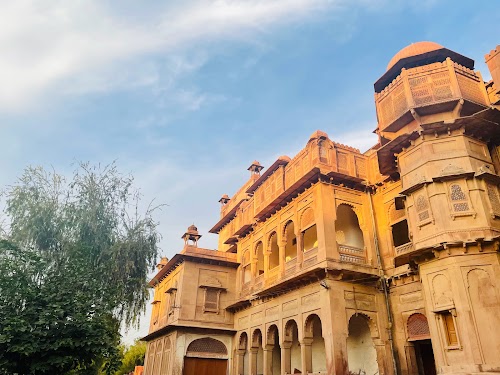
Junagarh Fort
Bikaner, India
- Admire the intricate carvings
- Attend cultural performances
- Explore the palaces and courtyards
- Visit the fort museum
- Witness the light-and-sound show
Known for:
Description:
Junagarh Fort, an architectural marvel in Bikaner, Rajasthan, stands as a testament to Rajputana grandeur. Unlike other forts in Rajasthan, it's not situated on a hilltop but on level ground, surrounded by a formidable stone wall. Within its imposing walls, a complex of palaces, temples, and pavilions showcases intricate carvings, delicate latticework (jali), and vibrant frescoes. The fort's museums house a rich collection of artifacts, including royal costumes, weaponry, and palanquins, offering a glimpse into the opulent lifestyle of the erstwhile rulers. The palaces like Anup Mahal, Phool Mahal, and Chandra Mahal are particularly noteworthy for their exquisite interiors and stunning artwork.
History:
Construction of Junagarh Fort began in 1589 AD under the reign of Raja Rai Singh, a general in the Mughal emperor Akbar's army. Completed in 1594 AD, the fort remained unconquered despite several attacks. Over the centuries, subsequent rulers added palaces and structures within the complex, resulting in a blend of architectural styles, including Rajput, Mughal, and even European influences. The fort served as the royal residence until 1943 when Maharaja Sadul Singh moved to Lalgarh Palace. Today, it stands as a well-preserved heritage site, offering visitors a captivating journey through the history of Bikaner.